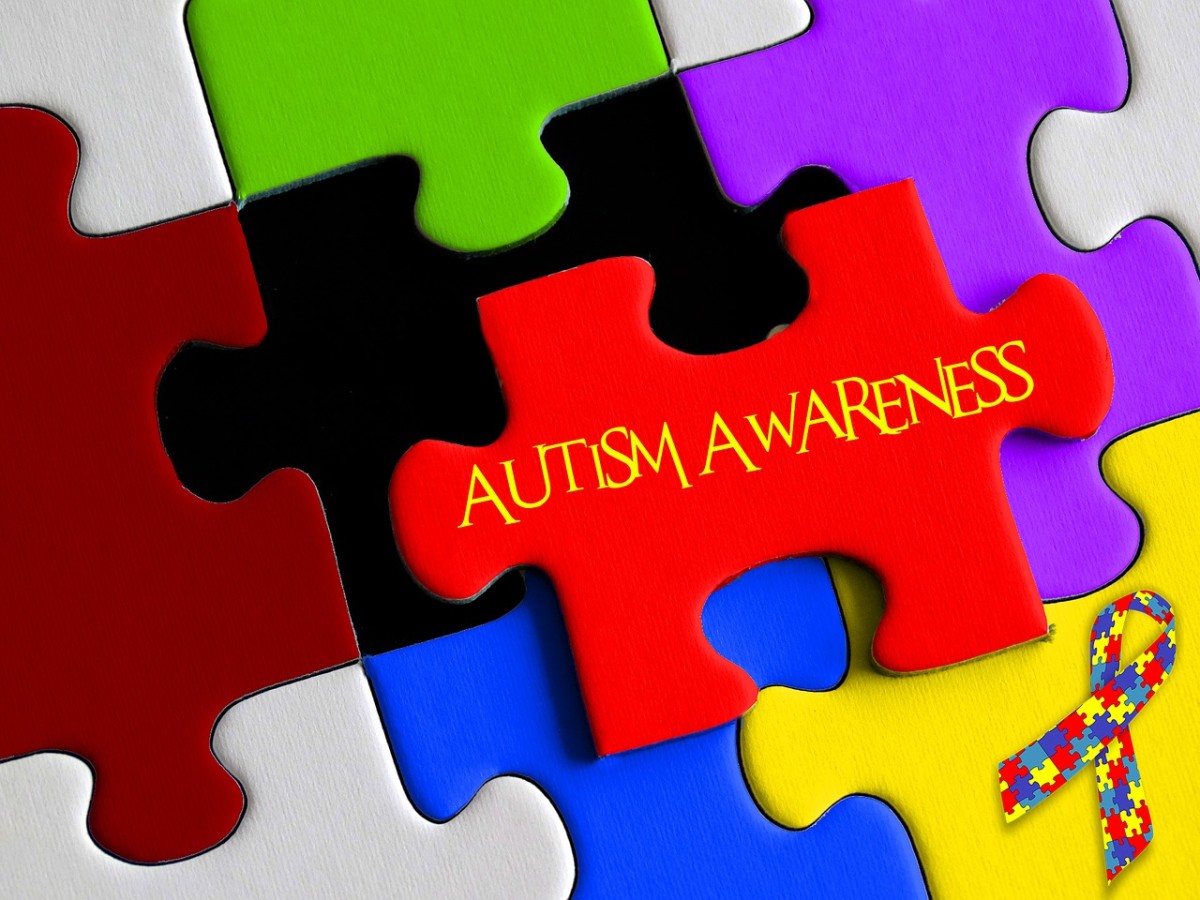Nutritional Treatments of Autism
ABSTRACT
There are plenty of indications that diet can provide relief of many autistic symptoms. This study discusses the three most popular approaches used, B6 and magnesium supplementation, fatty acid supplementation and the gluten free casein free diet and covers the various research to date on these topics to see if there is appropriate results to recommend using these approaches. I have included all research on these issues that I could find that had appropriate statistical results. I searched the National Autistic Society’s comprehensive database and other research sites to find these research reports. The results of this project show that there has been plenty of small scale research on these topics and the indications are that large scale research would show a positive result with all the approaches discussed. However, to date, this research has not been undertaken.
Keywords: autism; diet; casein; gluten; fatty acids; B6; peptides; nutrition
INTRODUCTION
Autism is a neurological condition which leads to impaired communication (Trevarthen et al, 1998; ). It is a complicated disability and it affects communication. Autism is considered to be a spectrum disorder which means that there is complete range of severity from those who will never be able to lead a 'normal' life to those who do not know that they have the condition but have always wondered why they have so much difficulty in communicating with others. This spectrum also includes Asperger’s Syndrome which is a higher functioning version of the condition. Those with autism may have low intelligence but may well have average or even high intelligence. In many cases there are no obvious signs of the condition until the child is about two, although often those who are experienced in autism may notice the signs earlier. Research done by Lorna Wing (1979) produced what is known as the triad of impairment, which is the basis on which autism is often diagnosed. The triad of impairment is the three main areas where those with autism have problems, these are social interaction, communication and imagination.
Some people with autism do not speak and those that do may have a stilted manner and may be unintentionally rude (Marshall, 2006). Some children are late to start talking and even those who can speak well may find it hard under certain circumstances and may, for instance, only speak at home. When they do talk they may use nonsense words and there might be abnormalities in pitch, intonation, rate, rhythm and so on. Echolalia can occur too, when the child will repeat what has been said to him, often not actually understanding the words. Not only may those with autism find speaking difficult they may find other forms of communication and social interaction difficult as well. Most young children will quite happily play with other children and communicate with limited or no speech, however this is not the case for those with autism, they can find it very difficult to do this. They can also lack imagination and find it difficult to play spontaneously, they may have very rigid routines and can get very distressed when these routines are changed. In addition those on the autistic spectrum often have very rigid interests and get bored when what is required does not involve these interests. There may also be problems with the theory of the mind, which leads to a lack of understanding that other people are actually people with the same feelings, desires and so on as they have. There may be a lack of the ability to read faces and so an inability to tell when someone is cross with them, teasing them or whatever, they may be oversensitive or undersensitive to light, noise, pain etc. Often much of their 'odd' behaviour is just an effort to bring a feeling of security and being in control to their lives. A larger proportion than average of those with autism suffer from epilepsy as well.
Within this definition however, every child has his own personality and this can affect how he behaves, some may be pushy, some may be shy, some are passive and some get agitated and so on. Eye contact is often poor, those with autism often do not look enough at people, but sometimes they will look too much. They may take things literally, so if you say 'I'll just be a minute' they will get cross if you take 90 seconds and they have a great deal of problems understanding the outside world. Those with autism often have an enormous number of tantrums, although sometimes they can be some of the easiest of children.
There is a complete range of abilities for those with autism, even amongst those with average intelligence. Some children will be able to adjust to a fairly normal setting and others will find this practically impossible. Many will go on to lead a fairly normal life, others will always be dependent on other people. However, whatever the severity of the condition there are always certain aspects that can be improved but it is not always easy to know where to start. That is where this book comes in.
Autism is a complex neurological condition which, so far, seems impossible to treat with conventional medicine. As a result of this many people have developed different approaches that they believe to be effective. Much of the evidence is anecdotal although there is an increasing amount of research to back it up.
There are now a great many different methods and therapies that have been used to help those with autism (Rimland, 2006). Many of these have either well researched results or circumstantial evidence to prove that they are effective. However, even those that are effective on some people are not on others due to the complex nature of autism. In this project I will research the effect of the three main dietary approaches in the treatment of autism and provide details of the different methods and procedures used and the research into its effectiveness.
Obviously a good healthy diet is important for everybody’s optimum health, but is particularly important for those with health issues. There is an ever increasing amount of research covering the effect of diet on the brain.
The most popular nutritional approach for use with autism seems to be the use of the gluten free casein free diet (Food and Behaviour Research, 2003) in which all gluten (found in wheat, rye, barley and some other grains) and casein (found in most dairy products) is removed from the diet. Many people have found this to be very effective with their children and it is thought to be related to digestive issues in the individual. The downside of this approach is the problem of having to make significant changes to the diet of a child who is often already a difficult eater.
The use of B6 and magnesium supplementation is another approach that has proved popular (Edelson, 2002) and has been used for over 30 years and while a small amount research claims that it does not work, no research has said that there is any risk with it. Supplementation with fatty acids is increasingly popular these days due to their effects on the brain (Equazen, 2006).
Other areas include vitamin C supplementation (The Vitamin C Foundation, 2006; Rimland, 2005) where the indications are that it can reduce the severity of autistic symptoms, leaky gut (Rona, 2001; Edelson, 2002), where a damaged intestine can lead to poor and incorrectly absorbed nutrients, the use of enzymes to help the absorption of food (DeFelice, 2002), the use of a hormone called secretin (Autism Research Unit, 1999), the use of probiotics (Mercola, 2002) to help the efficiency of the digestive system, and the use of minerals particularly zinc (Pfeiffer, 1978), iron (Gordon, 2004; Dobbing, 1990) and selenium (Rimland, 2002). In addition, allergies and intolerances, particularly to food additives, sugar and caffeine, may lead to autistic style symptoms.
The Autism Research Institute (Autism Research Institute, 2006) in America has been giving its patients questionnaires for 40 years (since 1967) on the different approaches they have used and their effectiveness and has been analysing these results (Rimland and Edelson, 2005). The result of this is a wide selection of nutritional supplements, special diets and conventional drugs listed with percentages who improved during treatment, the percentage who got worse and those which stayed the same. The study is subjective and only has the parents’ opinion of whether their child has improved or not but the large figures involved help balance this out. Over 23,700 parents have filled in their questionnaire and many interventions have had over 5,000 responses. Which shows the level of interest in these treatments.
What is interesting from this data is that the nutritional supplements and dietary approaches tend to be more effective than the allopathic drugs. Autism is notoriously difficult to treat by conventional methods, but it is possible that those parents whose children weren’t helped by these approaches are more likely to attend the Autism Research Institute to investigate other approaches.
It is important to bear in mind when looking at the figures that a drug is considered a success if half the studies show it to be effective. On this basis, all the nutrients discussed below would be considered effective.
The main approaches used to measure the changes in autism are behavioural. This can, of course, be unreliable as it is personal views on the behaviour. The reliability can be improved by having more people measuring this, including both parents and professionals. There are various structured methods for measuring the different autistic traits.
Other methods are levels of HVA. HVA is homovanillic acid which is a metabolite of dopamine. Research has shown that people with autism often have significantly higher levels of HVA (Martineau et al, 1987; Barthelemy et al, 1988). This may be due to brain catecholamine dysfunction in autism (Garner et al, 1986).
Averaged evoked potentials (AEPs) are also used in research and are one method of measuring the brain’s ability to process external sensory stimuli, it is thought that they measure catecholamine metabolism which includes dopamine, a neurotransmitter, which seems to play a part in motor control, cognition and hormone release. The link between AEPs and behaviour is not completely clear, however there is a greater variability in AEPs in autistic people compared to control subjects, there are also lower amplitudes and shorter latency periods (Pfeiffer et al, 1995).
METHODOLOGY
In order to collect the various research reports discussed in this project, I have searched many research websites. Most of these reports were found on the National Autistic Society website, which have been collated by the Autism Research Unit in Sunderland. Of these reports I have included all that have produced some sort of statistics as a result of the research. I have also included information on studies of related conditions when I considered it relevant. By using this method I can discuss all research into the areas discussed and draw conclusions as to its validity.









